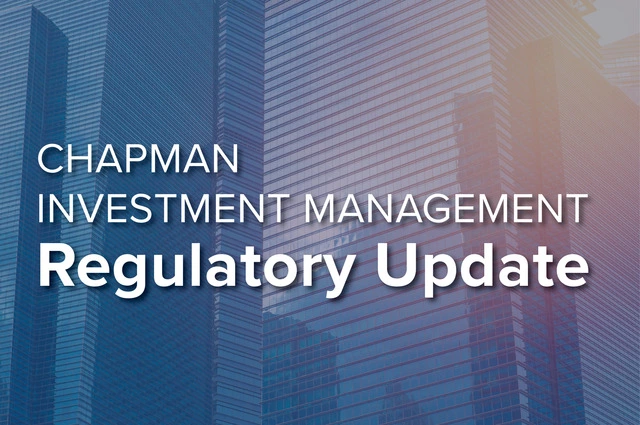- Topic: ESG
16 matches.
The Securities and Exchange Commission is taking significant steps to combat “greenwashing,” which occurs when a company conveys false or misleading information to overstate its environmental or sustainability practices, as well as other activities the SEC perceives to be potentially misleading to investors with respect to a company’s ESG efforts.
As interested parties look for more direction on Environmental, Social and Governance (“ESG”) matters, the Loan Syndication and Trading Association (“LSTA”) recently issued new Guidance for Green, Social, and Sustainability-Linked Loans External Reviews (“External Review Guidance”) and Guidance on Social Loan Principles (“Social Loan Principle Guidance”). A summary of this guidance is below.
At the urging of investors and in accordance with the Biden Administration’s climate agenda, the United States Securities and Exchange Commission (“SEC”) yesterday issued long-awaited new proposed rules to increase climate-related disclosures. The Enhancement and Standardization of Climate-Related Disclosures for Investors (the “Proposed Rule”), if finalized, would amend the SEC’s rules under the Securities Act of 1933 and Securities Act of 1934 to require that registrants provide robust climate related information in their registration statements and annual reports. The rule would apply to all domestic and foreign companies required to be registered with the SEC.
The Public Finance Initiative (PFI) and the National League of Cities (NLC) have launched the Bond Markets and Racial Equity Project to identify the factors in a municipal bond issuance that signal progress toward racial equity and income equality to investors and other stakeholders. Additionally, PFI and NLC will use the Project to develop resources that can be used by governmental issuers to center racial equity in municipal bond-funded infrastructure investments and to measure how social determinants of equity change over time on a uniform basis. The unprecedented Project is funded by a $4M grant from the Robert Wood Johnson Foundation. By funding the Project, the Foundation aims to help issuers leverage the municipal bond market in a meaningful way to help correct racial and economic inequities.
Environmental, Social and Governance (“ESG”) investing continued to grow throughout 2021 and this growth is expected to continue into 2022 as ESG investments are estimated to surpass $41 trillion in assets under management globally by the end of the year. ESG investing occurs when investors make investment decisions based on a company’s environmental, social and governance policies and performance alongside traditional financial metrics. As investment firms, lending institutions, and individual investors are increasingly looking at ESG factors to identify material risks and growth opportunities, a number of trends are expected to emerge in the upcoming year. These include regulation of ESG disclosures, growth in green technology, renewable energy and infrastructure investments, and heightened standards associated with sustainable finance.
Lenders and investors are taking different approaches to building ESG portfolios based on the entity’s own preferences and values. However, one widely used tool involves screening of select assets or transactions that align with those values.
As Environmental, Social and Governance (ESG) performance becomes more prominent, institutional investors, asset managers, financial institutions, and other stakeholders are increasingly looking at ESG factors in making investment and lending decisions. In doing so, these entities are relying on a number of information sources, including ESG ratings and reports.
At today’s Earth Day Climate Summit, President Joe Biden announced to world leaders that the United States is committed to cutting its greenhouse gas emissions by 50% to 52% from 2005 levels by 2030.
Last week the Loan Syndications and Trading Association, the Loan Market Association, and the Asia Pacific Loan Market Association jointly published their first ever Social Loan Principles.
On April 9, 2021, the Securities and Exchange Commission Division of Examinations issued a Risk Alert highlighting observations made by the Division from recent examinations of investment advisers, registered investment companies, and private funds offering products and services that incorporate environmental, social, and governance factors.
The Securities and Exchange Commission this month announced that the Divisions of Corporation Finance, Examinations, and Enforcement are all undertaking climate or ESG-related initiatives.
The Department of Labor announced that it will not enforce its previously issued final rule regarding plan fiduciaries’ use of environmental, social and governance factors in selecting investments for tax‑qualified retirement plans.
Environmental, Social and Governance investing in the United States has reportedly reached an estimated $250 billion in assets under management and is expected to see continued growth in 2021 and beyond.
On October 30, the Department of Labor issued a final rule which amends its 1979 investment duties regulation under the Employee Retirement Income Security Act of 1974, as amended, to update and clarify its position with respect to ERISA plan fiduciaries’ use of environmental, social and governance factors in selecting investments.
Pension shortfalls. Crumbling infrastructure. Wage pressures. These are only a few of the budgetary pressures facing state and local governments. It’s no surprise that, with so many demands on limited tax dollars, funds needed to address social problems are being diverted.
- April 2017
This white paper addresses pay for success legislation that has been adopted at the state level, pointing out the various functions of the pay for success financing structure and how individual states have treated these components within their legislation.









